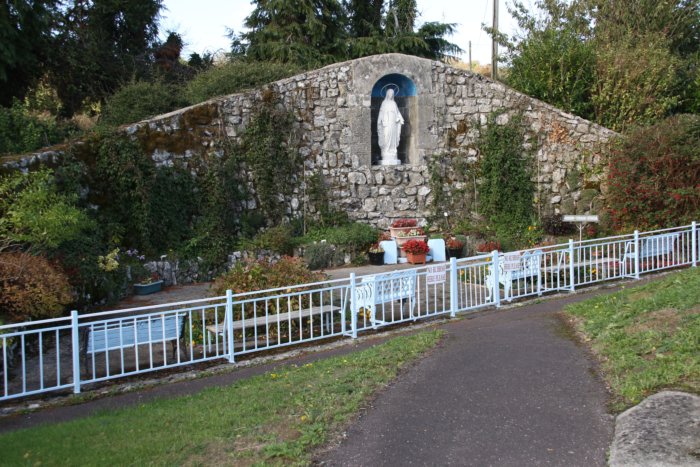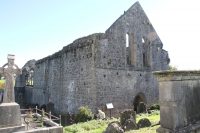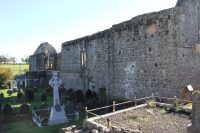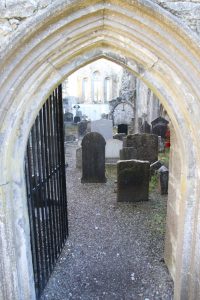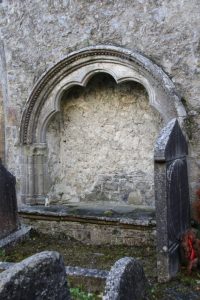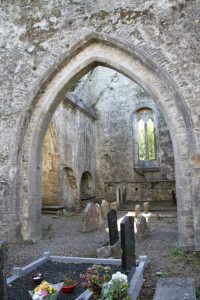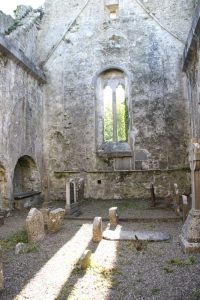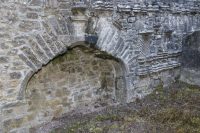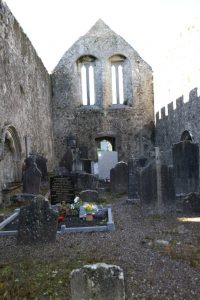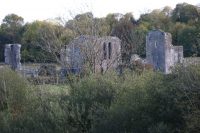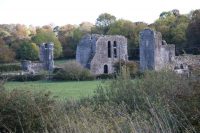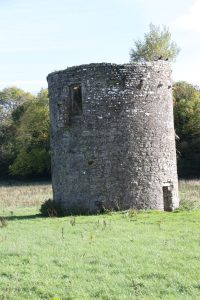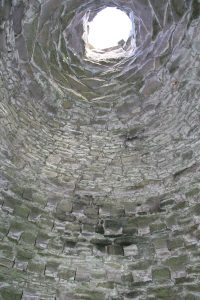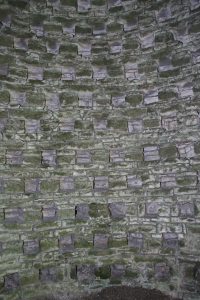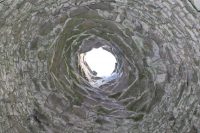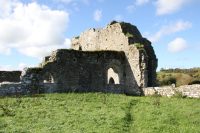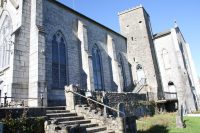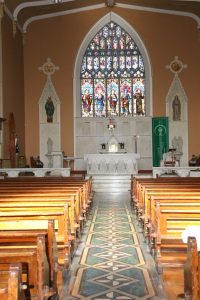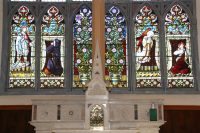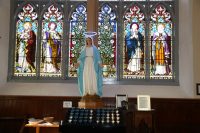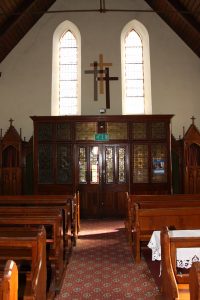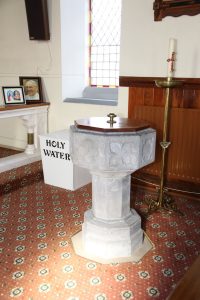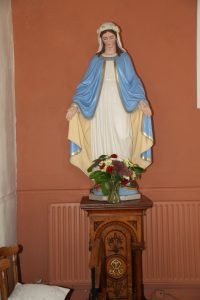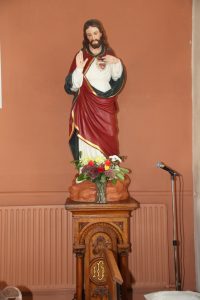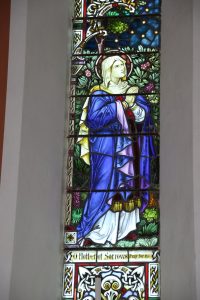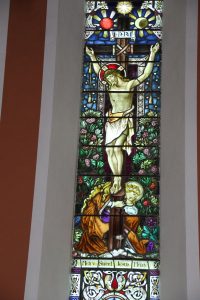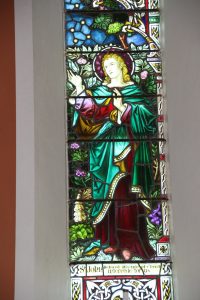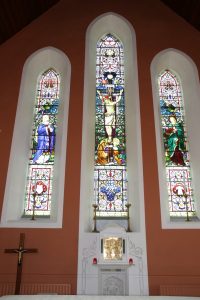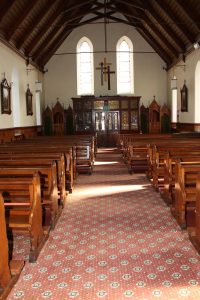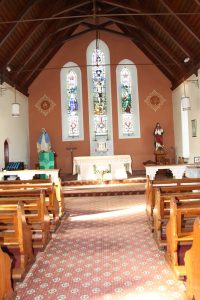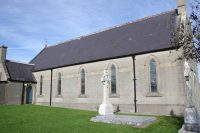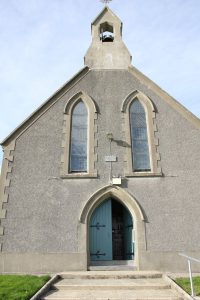Genealogy Service
The Baptism Registers of Buttevant and Lisgriffin Parish date back to 1814 when the first entry was recorded in them. Between 1814 and 1895, 10,121 entries have been recorded.
An index of the years 1814 - 1895 was compiled between the years 1988 - 1989 in order to simplify the tracing of entries in the original registers and to facilitate genealogical research generally. The 1988 - 1989 project was sponsored by Mallow Parish Centre with financial assistance and advise from FÁS, the Industrial Training Authority. The Project Leaders at the time were Deirdre Sheehan and Norma Taylor.
The Marriage Registers of the Parish date back also to 1814 and contain 1,992 entries from 1814 up to 1899. There is a handy cross-reference for wives surnames within this register. If the husband's name is read incorrectly or even omitted, the marriage can be found under the wife's surname.
Graveyard Inscriptions: Buttevant heritage Committee undertook a serious work in logging the inscriptions of all the legible headstones at the following graveyards in the parish and referencing each headstone with a number which corresponds with a numbered plan of the graveyards helping the searcher to locate that particular plot.
- Around St. 's Church and Franciscan Abbey: 462 inscriptions recorded.
- Around St. John's Church of Ireland: 155 inscriptions recorded.
- At Templemary Graveyard: 222 inscriptions recorded.
Due to the physical deterioration of some of the headstones, a recording of the inscription was not always possible. In some cases a full inscription was not completed due to the fact that the writing was not always legible. The oldest date recorded is 1603 and that headstone is located in the Franciscan Church.
If you would like to engage with the Genealogical Service from the Parish please email your query to the Parish Priest using the email address: [email protected]
The Franciscan Friary
To walk the streets, the roads and the fields of Buttevant and Lisgriffin is to be in touch with a story written in ruins. The Parish of Buttevant and Lisgriffin is a union of three older, smaller parishes; Kilbroney, Bregoge and Buttevant. The first chapel built in the parish was dedicated to St. Brigid, sister of St. Colman. Another chapel was built near it and was dedicated to the Virgin Mary.
Buttevant was for many centuries the home of a Franciscan friary, the ruined church of which still stands close to the present church of St. Mary. Its 750th anniversary was celebrated in 2001.
The Friary and lands were confiscated in post-reformation times, but the friars continued to live in Buttevant and were to be found there until c. 1750. Just over 100 years later the Mercy Sisters came to the parish from Charleville.
The ruins of a nunnery dedicated to St. John are located in the old convent grounds. There is a plaque on the boundary wall of this old convent telling of the Franciscans who lost their lives in Cromwellian times.
Ballybeg Abbey
One of the oldest and most outstanding of Buttevant's sacred places is Ballybeg Abbey. This Augustinian Abbey was established in 1229 and dedicated, as was the Franciscan Friary, to St. Thomas a Becket. Little of its structure remains. However, in its day, it must have been an extensive establishment and a very impressive sight on the Buttevant landscape. The Columbarium is of great interest.
Lombard's Castle, once a thriving centre of trade and banking, through which revenues due to the Holy See were collected, is another landmark on the main street.
St. Mary's Church
St. Mary's Church was begun in 1831 and opened in 1836. It replaced an older building which served the people of Buttevant during the transition from the ministry of the friars to diocesan administration. Bishop M. Collins wrote in 1828: 'The chapel is almost in ruin', and in 1830, 'The chapel, an old thatched fabric, is unfit for this parish and for any other'. The Desmond Tower, built in 1400 CE was incorporated into St. Mary's.
Church of the Immaculate Conception, Lisgriffin
Bishop William Keane (1859), remarked that there was "a fine chapel in Buttevant. The chapel at Lisgriffin, a poor old building is to be replaced by a new one". Accordingly on the 8th December 1897, the Feast of the Immaculate Conception of the Blessed Virgin Mary, the new church at Lisgriffin was consecrated by Bishop Browne of Cloyne Diocese. The architect for the new church was Mr. Hynes, a well known Cork architect and the building contractor was Mr. Walsh of Kilmallock. The church at Lisgriffin is named in honour of the Immaculate Conception of the Blessed Virgin Mary.
Marian Grotto
The Wayside Shrine to Our Lady at Ballybeg Grotto was built during the early fifties 1951 or 1952 by the men who worked in the nearby Limestone Quarry, along with local farmers and helpers. They were a people with a deep faith and devotion. The site was donated by Eddie McCarthy. It is set in a recess which was a lime kiln away back at the beginning of the last century. William Hutch was the grotto architect/engineer. The inaugural Grotto Committee was comprised of Fr. Pat O' Mahony, Fr. J. O' Connor, Pat Kelleher, Pat Mangan, Mary Coughlan of Kilclousha. They held their meetings at the local Boys School where Dr. Kennedy now has his surgery. The Statue of Our Lady at the Grotto was made from Italian Cararra marble.
